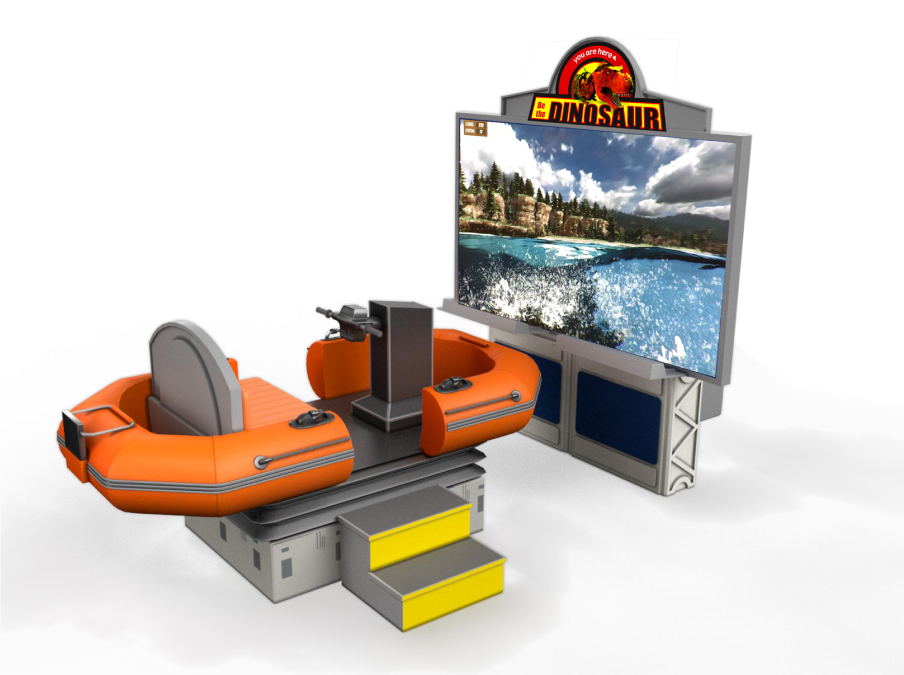when paleontology gets together with cutting edge, interactive video game technology, it is a recipe for a truly amazing scientific exhibit - unlike any you’ve seen before

a game & an exhibit
An exhibit designed for modern audiences, Be the Dinosaur combines current science – showcasing both knowledge and uncertainty of the study of dinosaurs from fossil evidence – with a fully interactive game and traditional exhibit (including a steaming volcano!).
learning, through a
simulator pod
Dinosaurs formed part of a complex ecosystem, just like all living creatures today. Realistic simulations in Be the Dinosaur enable this ecosystem to come to life.
a scientific scavenger hunt
Fueled by their innate drive to “win” at being a dinosaur, kids are motivated to engage in a scavenger hunt to acquire information within the exhibit and then apply it in the game.
Twelve navigation icons - representing a range of scientific topics – provide visual links within the game and the physical exhibit.
Be the Dinosaur takes place inside a simulated Cretaceous ecosystem, modeled in great detail from the flora and fauna found in one of the world’s most studied fossil sites, the Hell Creek Formation.
The movements, behaviors and physical features of the tyrannosaurs, hadrosaurs, triceratops and all other dinosaurs simulated in the game were developed with meticulous oversight by an impressive array of leading paleontologists who form Eureka Exhibits' BTD advisory panel.
Learn. Experiment. Enjoy – Ride the River…Dinosaur River!
Join renowned paleontologist Dr. John Hutchinson on an exciting and educational full-motion adventure down a raging Cretaceous River filled with dinosaurs and danger!
Get a glimpse into what dinosaur behavior might have been by paddling your way through a herd of triceratops as they take their morning drink, navigating a migrating flock of hadrosaurs, and fighting your way past the domain of the mighty Tyrannosaurus rex as well as shooting rapids, dodging rocks and plummeting over waterfalls!
High definition graphics and video game technology, dinosaurs, animal behaviors and plant life all reconstructed from the fossil record and scientific investigations. Using Eureka’s motion-base technology for an easy, attendant- and maintenance-free interactive motion ride experience. Learn more





